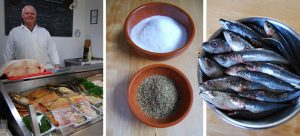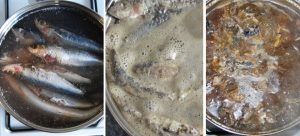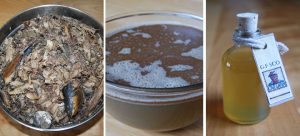Take a smell walk into the past – anyone for Garum?
Paula Lock will be leading a smell walk as part of the Being Human Festival of the Humanities. She has written this blog to introduce you to this topic. You can join Paula on Thursday 24 November – see this link. She is a PhD student at the University of Kent.
I’m doing a spot of time travel for the Being Human festival this year. Anyone who’s prepared to join me on a stroll around Canterbury will have the chance to be transported back to Roman times with the sights, sounds and smells of the past.
But time travel takes a bit more effort than just hopping into the nearest phone box. If my audience is going to get a whiff of ancient Roman life, then I first had to create those smells — an unexpected career diversion into scent creation beckoned.
In casting around for the smells that might best evoke a Roman way of life, there was an obvious place to start. And so it was with some trepidation that I began to delve into the arcane world of Roman ‘ketchup’ — the fish sauce known as garum. Described by one ancient author as a ‘costly extract of poisonous fish, that burns up the stomach with its salted putrefaction’ (Sen. Ep. 95.25), the thing to do — obviously — was to make some.
Garum was commonly made by allowing fish to ferment in the Mediterranean sun for several months. Fortunately, the Romans had alternative recipes that avoided protracted exposure of dead fish — disappointing for the local cats, but useful given the London climate in November.
Let’s get cooking!
The first step was to get some fish, and after a visit to the local fishmonger, I stood in my kitchen armed with a big bag of mackerel and sardines, along with a sea bass head and sundry innards. These all went into a large pot with loads of salt, oregano and water. I lit the gas and stood well back.
The first aroma that came from the bubbling mixture was the fragrant smell of oregano. Maybe, I thought, this wasn’t going to be as bad as I’d feared. However, the pleasant herby smell was rapidly overtaken, first by sardines and then finally by the full force of mackerel wafting through the house — a ‘perfume’ that lingered well into the following day.
I steeled myself, and stood over the steaming pot to take in the full force of the smell. Boiled fish, not too unpleasant, but there was a second, more acrid and powerful note — it’s difficult to explain, but the overall reaction was to say ‘Eurrgh’ and step swiftly back. Although I was prepared for some kind of unpleasant fishy scent, I was surprised to find that the smell made me feel quite queasy for the rest of the day.
As the sauce developed, it changed not only its smell, but also its appearance. At first, the boiling mass resembled a frothy cappuccino — albeit one with fish floating in it. After 20 minutes of cooking, the recipe says to break the fish up and the sound of the bubbling concoction was accompanied by the soft crack of fish bones as the spoon got to work. I was eventually left with a mixture that had turned to a sludgy brown colour — not particularly appetising.
The last stage of the production was to sieve the steaming mixture, which left me with a colander full of unidentifiable grey fishy mush and a VERY cloudy brown liquid. After much filtering this liquid turned a soft amber colour. I had my garum! Time for the moment of truth.
Having chilled the liquid down, I uncorked the bottle with some dread. But, the smell of the finished product was much subtler than the cooking smell, just a light earthy fishy aroma with a background hint of herbs. As for the taste, the first hit is of intense salt, then a general fishy flavour that is overtaken by the full force of boiled mackerel — but it is the salt that really lingers.
Although I don’t think I’ll be dousing my chips with garum anytime soon, this was a worthwhile experiment. I now have a much greater idea of both the taste and smell of the condiment that played such a big part in the everyday lives of the Romans. I also have a strong sense of why garum factories tended to be located on the outskirts of the city!
If you are in Canterbury on 24th November, come along to the Roman Museum at 2pm and join me for my sensory walk around the city — and experience garum first hand for yourself. I would love to know what you think.
For updates see Twitter @PaulaLock5
The full list of the Being Human events taking place in Canterbury can be found here.




